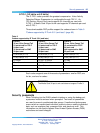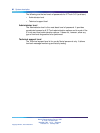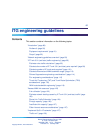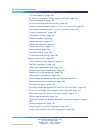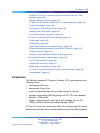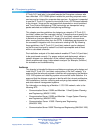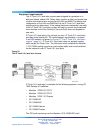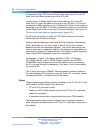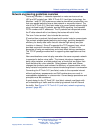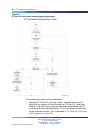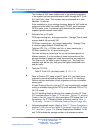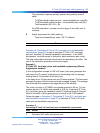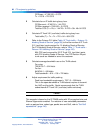
Network engineering guidelines overview 93
Network engineering guidelines overview
Previously, Meridian 1 networks depended on voice services such as
LEC and IXC private lines. With IP Trunk 3.01 (and later) technology, the
Meridian 1 and CS 1000 systems can select a new delivery mechanism, one
that uses packet-switching over a data network or corporate intranet. The
role of the IP Trunk 3.01 (and later) node is to convert steady-stream digital
voice into fixed-length IP packets, provide ISDN signalling, and translate
PSTN numbers into IP addresses. The IP packets are transported across
the IP data network with a low latency that varies with strict limits.
The term "voice services" also includes fax services.
IP evolved from a protocol that allowed multi-vendor hosts to communicate.
The protocol adopted packet-switching technology, providing bandwidth
efficiency for bursty data traffic that can tolerate high latency and jitter
(variation in latency). Since IP supported the TCP transport layer, which
provided connection-oriented and reliable transport, IP took on the
properties of being connectionless and a best-effort delivery mechanism.
The TCP/IP paradigm worked well in supporting data applications at that
time.
New considerations come into play now when the same corporate network
is expected to deliver voice traffic. The intranet introduces impairments,
delay, delay variation, and data packet loss, at levels that are higher than
those delivered by voice networks. Delay between talker and listener
changes the dynamics and reduces the efficiency of conversations, while
delay variation and packet errors causes introduces glitches in conversation.
Connecting the IP Trunk 3.01 (and later) nodes to the corporate intranet
without preliminary assessments and QoS mechanisms can result in
unacceptable degradation in voice service. Correct design procedures and
principles must be considered.
A good design for the IP Trunk 3.01 (and later) network must begin with
an understanding of traffic and the underlying network that will transmit
the traffic. See Figure 24 "IP Trunk 3.01 (and later) network engineering
process" (page 94).
Nortel Communication Server 1000
IP Trunk Fundamentals
NN43001-563 01.01 Standard
Release 5.0 30 May 2007
Copyright © 2007, Nortel Networks
.



